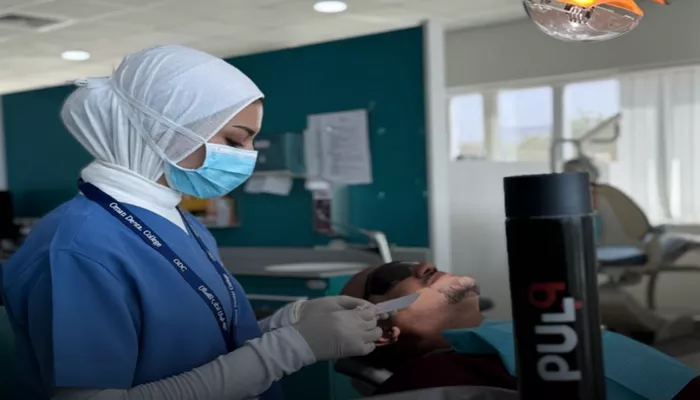Muscat, 25 May (ONA) — A team of researchers from Oman Dental College has successfully created a new dental filling material that is both very strong and fully biocompatible. This innovative filling uses Omani Portland cement reinforced with carbon nanoplates. It is the first material to combine these qualities, marking a major step forward in dental care worldwide.
Malak Khalifa Al Harthy, part of the research group called “Pulp49,” told Oman News Agency (ONA) that their work began by noticing a problem with existing fillings. She said traditional materials often fail to balance strength and biocompatibility well. This inspired the team to develop a composite that could do both.
Al Harthy explained that the composite is made by mixing Omani cement with graphene sheets. This mix gives the material excellent mechanical strength and high compatibility with dental tissues. It also helps surrounding tissues heal quickly and clearly.
The team spent about five years researching and testing the new composite. They first tested it on cells, then on animals, working closely with the Mounted Police Command. Now, the filling is in the second phase of human trials, and early results look very promising.
The new composite is expected to bring many benefits to dentistry. It offers an affordable option that improves how long fillings last and how well they work. This is an important advance for both patients and dentists.
One key benefit is the material’s biocompatibility. The carbon nanoplates help the filling interact positively with body tissues. At the same time, these nanoplates make the filling stronger. This balance makes the composite ideal for complex dental treatments.
The composite also supports tissue regeneration. It creates a favorable environment for the cells around the filling to grow back. This effect comes from the combination of the nanoplates’ properties and the chemical reaction between Portland cement and body fluids, which release calcium ions.
Another advantage is the filling’s superior sealing ability. The nanoplates increase the volume and improve the filling’s capacity to close gaps and resist water. This makes it perfect for situations where a tight seal is essential.
The innovation has received official recognition. It is patented in Oman and registered internationally. With support from the Ministry of Higher Education, Research, and Innovation, the team is finishing the final development stages. They plan to introduce the composite first in Oman, then to global markets.
Al Harthy described some challenges the team faced. Achieving the right formula took many rounds of testing and adjustments before they found the approved mixture.
She highlighted the strong support the project received. Oman Dental College provided resources, and the Royal Oman Police Mounted Police helped with trials. She also thanked Dr. Abu Bakr Qateeshat, head of Graduate Studies, Research, and Development, and Dr. Aida Al-Wahaibi for their guidance. She added that encouragement from family played a major role in reaching this milestone.
This successful innovation by Omani researchers offers a promising new tool for safer, longer-lasting dental treatments worldwide.

